The American Dental Association says that 178 million Americans are missing at least a single tooth. When a patient is missing a tooth or a few teeth, dental implants are the best option to replace these missing teeth, but a number of implants may be too involved and expensive. In these cases, a dental bridge from the Schmitt Dental team is a perfect solution.
What Is A Dental Bridge?
As the name implies, a bridge spans the gap created by a missing tooth or teeth. Bridges have three parts: two crowns are placed on the teeth on each side of the gap (the abutment teeth), and the false tooth or teeth in the middle, usually porcelain fused to an underlying metal base. These bridges are permanently cemented onto the abutment teeth and function as a single piece.
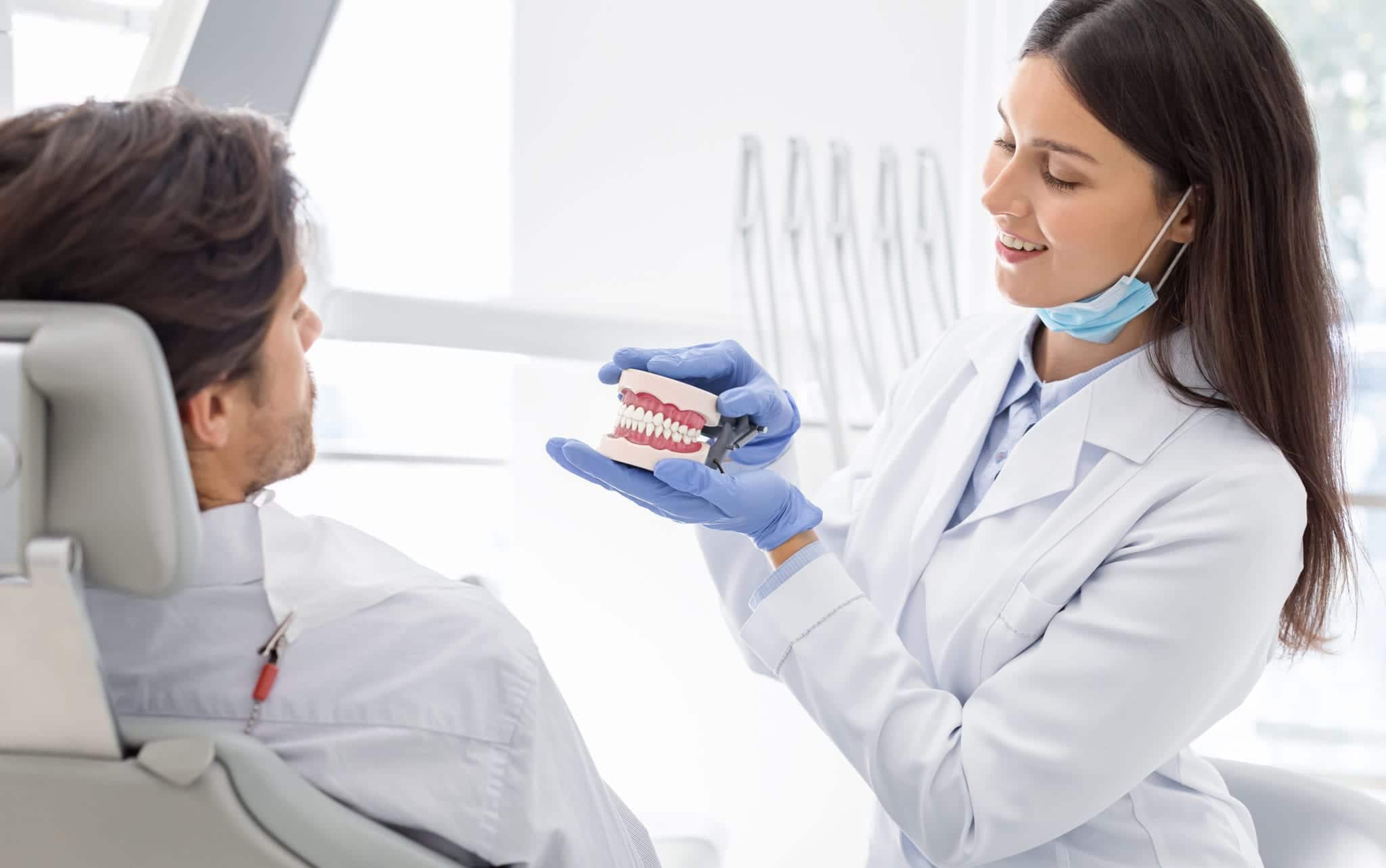
Because they are not removable, they are sometimes called fixed bridges.
This is the description of a traditional bridge, where there are abutment teeth on each side of the gap. If the missing teeth are on the back molars, a cantilever bridge will be used, where the anchoring teeth are the last two teeth before the gap. For the front teeth, Maryland bridges are used. These don’t use crowns, but instead anchor on the inner face of the adjoining healthy teeth.
Why Would I Need A Dental Bridge?
Sometimes patients opt to not replace a tooth that has either needed extraction due to excessive decay or was lost due to trauma. They either don’t want to spend the money or see the replacement process as a hassle. But this can create serious problems for your oral health. Teeth remain in place because of the pressure they receive from the teeth next to them. When that pressure is gone because one or more teeth are missing, the adjacent teeth tend to slide over into the gap. This creates problems with your bite and the alignment of your smile.
Here are several reasons patients opt to have a dental bridge:
- Replace missing teeth
- Maintain facial shape
- Prevent the adjacent teeth from moving into the gap
- Restore chewing and/or biting capability
- Restore speaking diction
- Restore the cosmetic appearance of your smile
- Replace a partial, removable denture
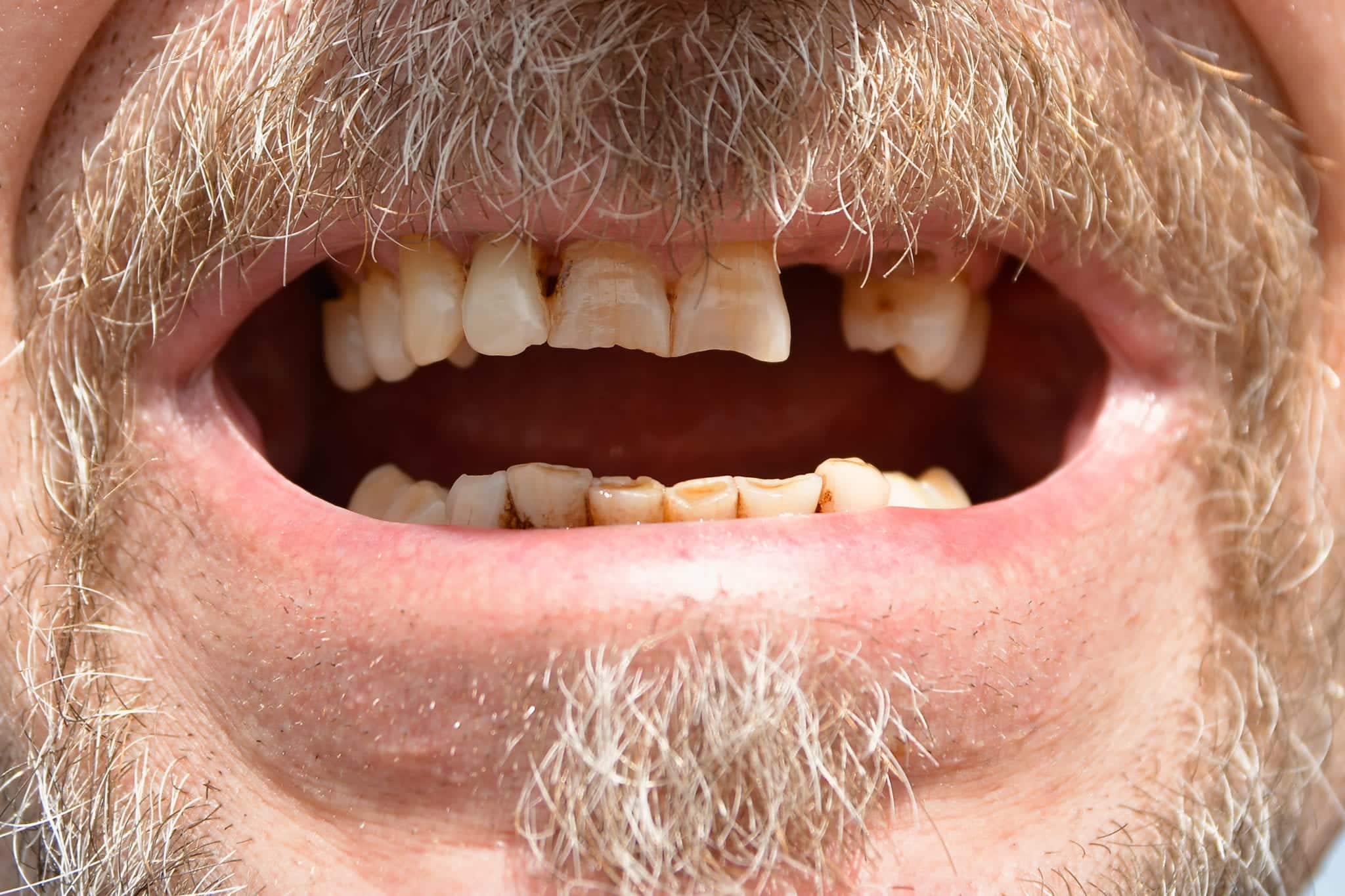
What To Expect During Dental Bridge Process
Dental bridges require two appointments. During your first appointment, your Schmitt dentist will prepare the two abutment teeth for their crowns. To do so, we shave off a portion of both of these anchor teeth on the top and all sides. The reason for this is twofold: we need to make room for the crowns to fully cover the underlying teeth without taking up more space and we need to make a perfect surface for cementing the crowns. Once the teeth are prepared, we take impressions and photos for color matching (we also use a shade guide to select the porcelain color to match your adjacent teeth) and send this information off to the dental lab where your custom bridge will be fabricated.
This usually takes about two weeks, and in the meantime, we’ll place two temporary crowns onto the abutment teeth.
How Are Dental Bridges Placed?
When your new bridge is delivered to our offices, you come back in. First, your doctor will check the bridge to see how the crowns and artificial tooth or teeth match your natural teeth. Then we’ll test the fit. If you prefer, we can place the bridge with temporary cement and you can test it out for a couple of days. Or, if you’re satisfied with the fit, we’ll permanently cement the crowns onto your teeth. That ends the procedure; you can go out and immediately begin using your new bridge.
What People Say About Us!
An amazing visit as always! 🙂 The office is always clean and everyone is so welcoming and super sweet! I’ve never felt so comfortable at a dentist before and would highly recommend anyone! Loved my hygienist! Super sweet as always and always remembers me! 🙂 she explained everything to me and I left with no questions or concerns! I’m looking forward to coming back in 6 months for another great visit!
Click here to read more reviews.
Who Is An Ideal Candidate For Dental Bridges?
The ideal candidate for dental bridge placement is someone who struggles with missing or broken teeth. These patients can have anywhere from one to four broken or missing teeth in a row. Patients with more than four missing teeth can have dental bridges placed in some instances.
Patients seeking dental bridges should have overall good dental health. Certain dental conditions, such as gingivitis or tooth decay, can affect a patient’s ability to have dental bridges placed. These conditions should be treated prior to having dental bridge treatment.
How Many Teeth Can A Dental Bridge Replace?
A dental bridge can be used to replace anywhere from one to four teeth at a time, depending on the patient’s unique needs. In most cases, two teeth at a time are replaced by dental bridges.
There are rare instances in which a dental bridge can replace more than four teeth, but this depends on various factors. Your dentist will carefully consider the stability of the surrounding teeth and your overall dental health.
How To Prepare For Dental Bridge Treatment
Preparation for dental bridge placement can vary from patient to patient. Some patients may require extractions or enamel removal before their dental bridge placement can proceed. These procedures should be performed in the weeks leading up to dental bridge treatment to create space for the bridges.
In the days before your dental bridge placement, it is essential that you keep up with your oral hygiene. Make sure to brush and floss to ensure that your teeth are healthy and ready for the procedure.
Will My Dental Bridges Look Natural?
Dental bridges are custom-made, using porcelain or porcelain fused to metal. Your dental bridges will be made to look natural and blend with your remaining teeth. Impressions will be made of your existing teeth to create your dental bridges. Specific measurements will be taken of your mouth and the space around the surrounding teeth to ensure that your bridges are the perfect size for your unique anatomy.
Patients find that their dental bridges look exactly like real teeth and are completely undetectable to others. When maintained well, your dental bridges should remain white and intact, matching the health and shade of your other teeth.
Will Dental Bridges Ruin My Teeth?
Dental bridge placement is a safe procedure that should not affect your overall oral health. In fact, dental bridges actually improve the health of your surrounding teeth by providing the stability that had previously been lost due to missing teeth.
With that being said, poor management of bridges can affect the abutment teeth over time. Failing to keep up with your dental hygiene can lead to plaque and bacteria buildup. If your bridges don’t fit well or lose stability, this bacteria can get inside and lead to tooth decay.
It is vital to practice good oral hygiene to prevent dental health issues or damage to your other teeth. This includes brushing and flossing twice daily and rinsing with an antibacterial mouthwash.
Is There Any Recovery Time?
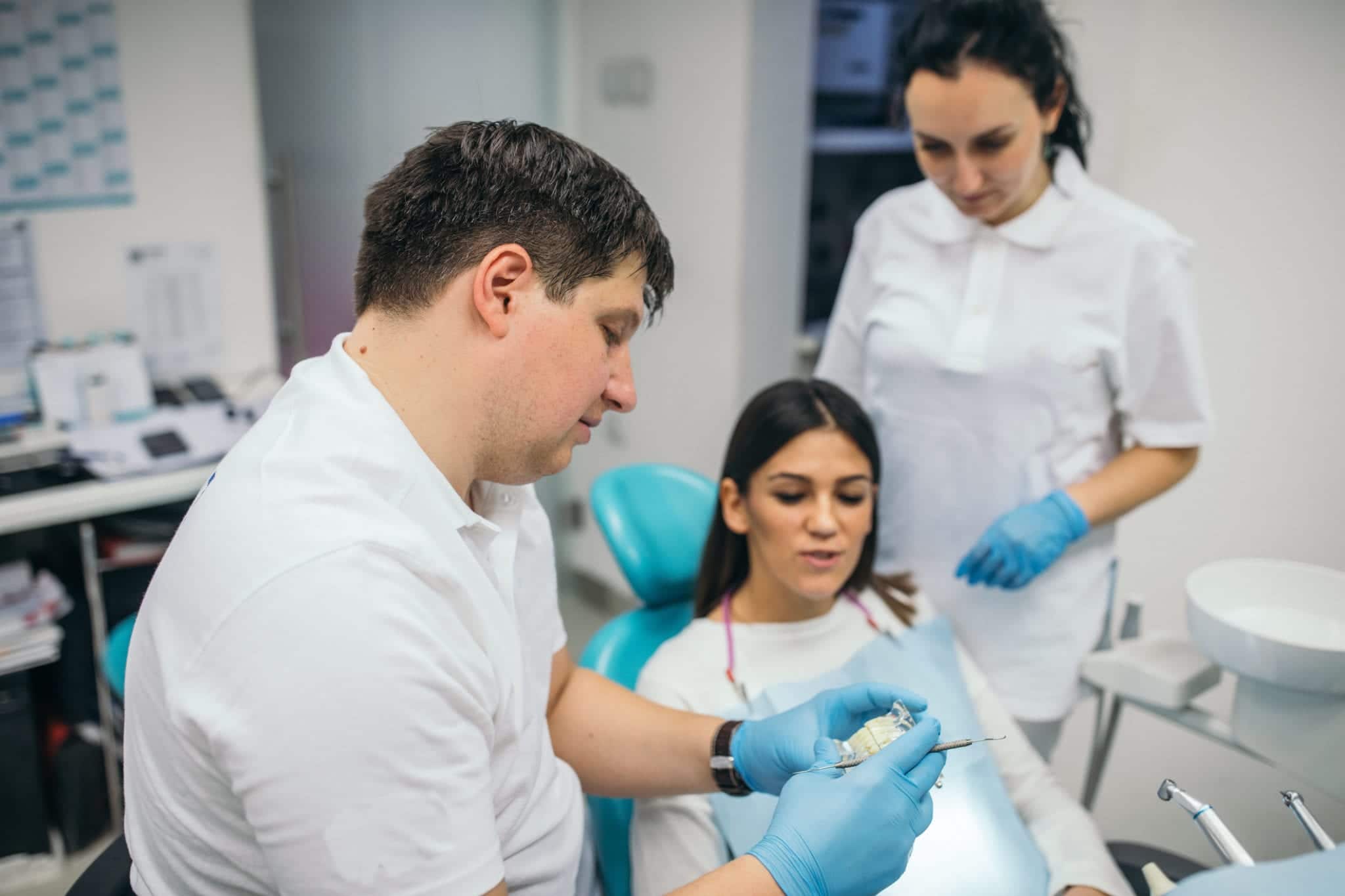
There isn’t any recovery for either stage of this process. When the abutment teeth are prepared in the first appointment, that doesn’t require recovery. We place a temporary bridge on these teeth while your permanent bridge is being made. In the second appointment, after we permanently cement your bridge onto your teeth you can immediately use it. There isn’t any pain or recovery.
How To Care For Dental Bridges
Regular twice-daily brushing and flossing are really all that you need to do to keep your bridge in good shape. The only difference is that you’ll need to floss under your false tooth/teeth of the bridge once each day. You can also use a proxy brush, which is designed for this kind of use. Flossing under your bridge ensures any trapped food particles are removed.
What Is A Dental Bridge Made Of?
At Schmitt Dental, we prefer to use bridges that are made from porcelain fused to metal. We feel these offer the best combination of strength and beauty. Dental porcelain has a natural translucency that closely approximates that of natural tooth enamel. Plus, porcelain is highly resistant to staining.
How Long Do Dental Bridges Last?
The lifespan of a bridge is usually dependent upon the health of the abutment teeth. If they remain healthy, a bridge can last up to 15 years or longer. Bridges can break if you chew on very hard foods, but these can usually be repaired. Still, it’s not a bad idea to avoid biting on hard foods (at least in the location of your bridge) and be careful when eating really sticky foods.
What Is The Difference Between Bridges And Dental Implants?
If you’re missing a tooth or a few teeth, there are really only two options for replacing them: a bridge or dental implants. Obviously, if you’re missing all of your teeth on one arch (of the majority) then dentures are a possibility. Sometimes bridges are called partial dentures, but they are the same thing.
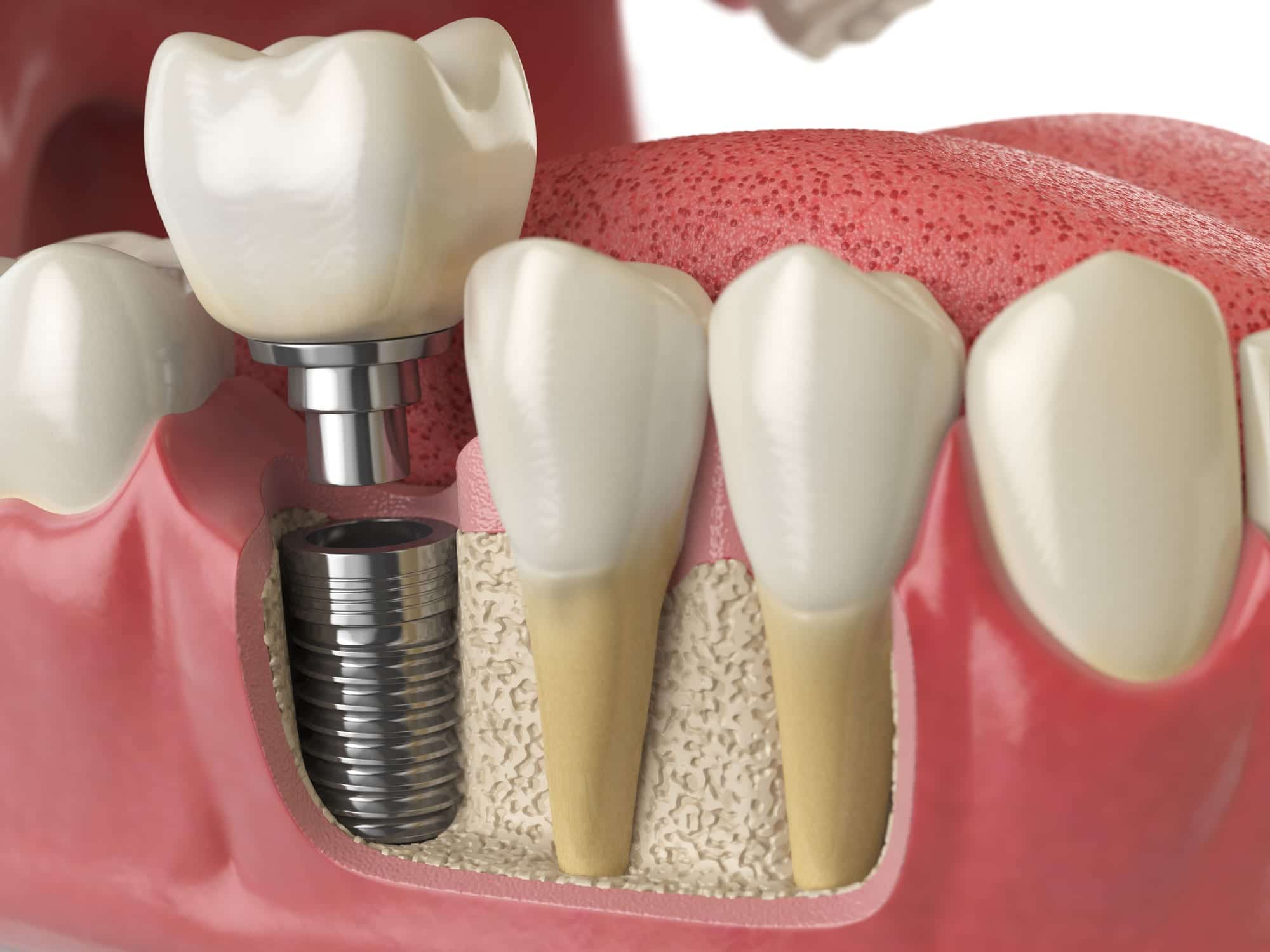
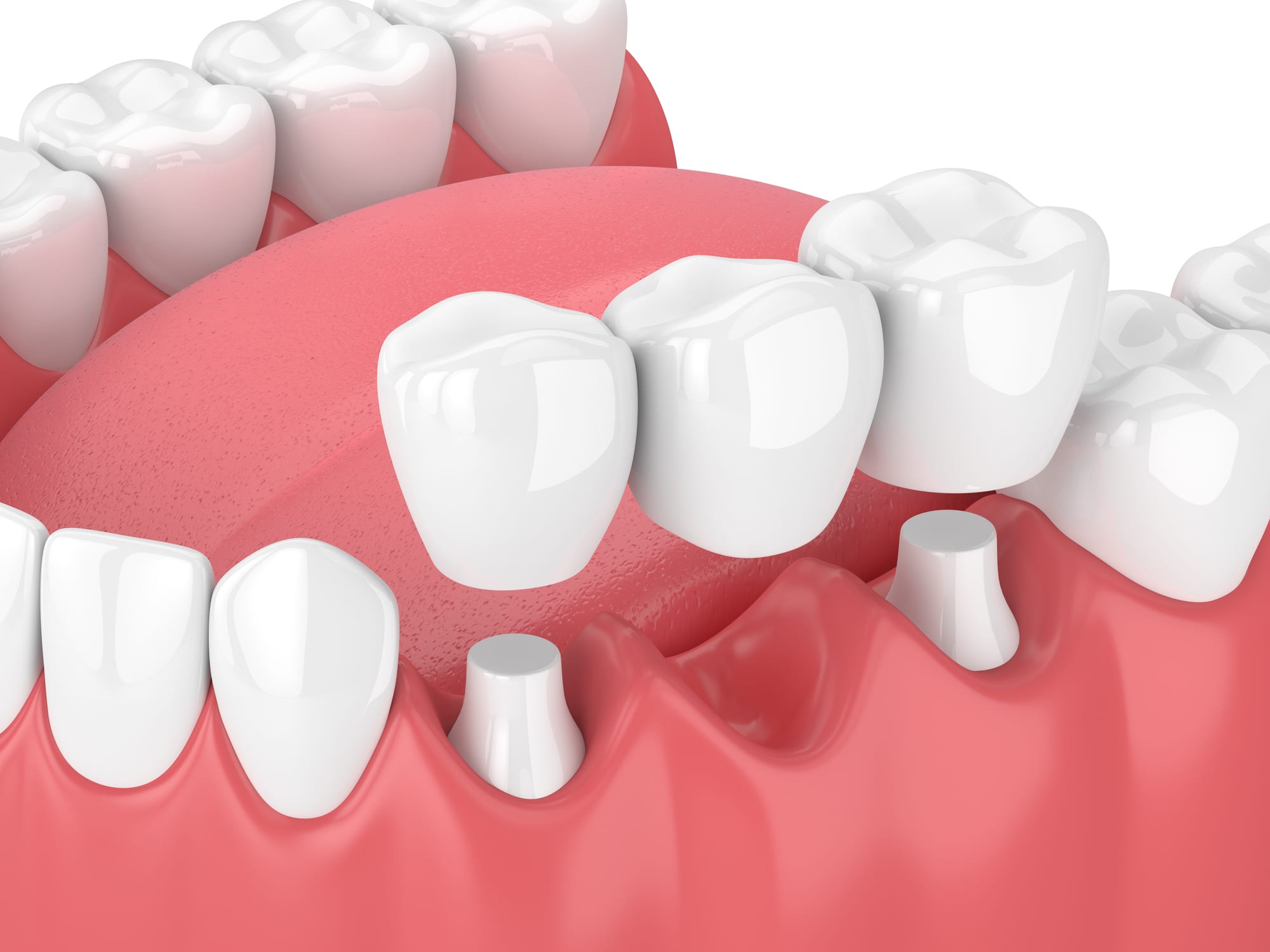
Dental implants are the best solution for replacing a tooth. The implant base is shaped like a screw and made of titanium. It is screwed down into the hole formerly occupied by your natural tooth root. Your jawbone then grows around the titanium implant, making it a part of your jaw. When this process is complete, a post is attached to the implant and an artificial tooth is attached to the post. Dental implants function just like natural teeth because they are anchored into the jaw in the same way. You can eat whatever you want and they will generally last decades, often the remainder of the patient’s life. Implants can also be used as anchors for fixed bridges if the patient is missing several teeth, but can’t afford to replace all of them with implants.
